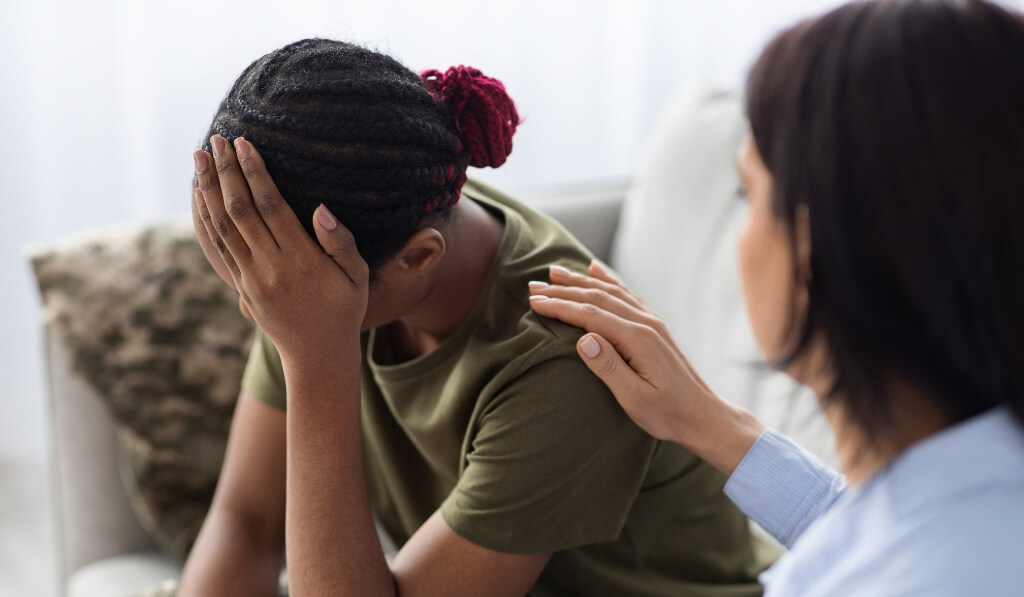Post-Traumatic Stress Disorder (PTSD) is a challenging and exhausting mental health disease that may arise following a traumatic incident. It may have far-reaching consequences, impacting many elements of a person’s life, including emotional well-being, relationships, and everyday functioning. Fortunately, PTSD recovery is possible with an apt approach and support. So, this blog takes a peek at effective strategies and therapeutic interventions for assisting individuals on their path to recovery and resilience. Read the complete blog if you’re experiencing PTSD to restore your feeling of serenity and control.
Understanding PTSD — Recognizing the Symptoms
Before exploring recovery strategies, grasp the following PTSD symptoms:
- Flashbacks and intrusive memories of the traumatic event.
- Nightmares and sleep disruptions.
- Prevention of trauma cues or reminders.
- Emotional numbness and disconnection from others.
- Irritability and difficulties focusing are symptoms of hyperarousal.
- Guilt, shame, or self-blame are all common emotions.
If you or someone you know exhibits these symptoms, get professional aid for accurate diagnosis and treatment instantly.
Seeking Professional Help — The First Step Towards Healing
Recognizing the detrimental effects of PTSD and seeking help are critical milestones in the healing process. Conferring with a skilled mental health practitioner with trauma treatment experience can substantially influence recovery.
What Type of Therapy is Best for PTSD
Cognitive Behavioural Therapy (CBT)
CBT is one of the most effective treatments for PTSD, focusing on modifying traumatic-related negative mental patterns and behaviors. Individuals eventually address and resolve their trauma through cognitive restructuring and exposure therapy, lowering anxiety and avoidance.
Eye Movement Desensitization and Reprocessing (EMDR)
EMDR is a specialist treatment helping people process and heal from traumatic memories. Clients are instructed to employ bilateral stimulation, such as eye movements or taps, during EMDR sessions to aid the reprocessing of traumatic experiences and lessen emotional discomfort.
Prolonged Exposure Therapy (PET)
It entails carefully and methodically confronting avoided circumstances and memories associated with the trauma. Individuals can learn to endure suffering and reduce the adverse effects of traumatic memories by exposing them to certain triggers in a controlled and encouraging setting.
Group Therapy
Group therapy provides a secure and empathic environment for people to discuss their trauma stories with others who have also been through trauma. Additionally, group settings enhance connection and healing by providing a sense of validation, support, and understanding.
Mindfulness-Based Therapies
Mindfulness activities, such as meditation and deep breathing exercises, can assist people suffering from PTSD to learn how to cope with unpleasant feelings and be present in the moment. These techniques can help alleviate anxiety and promote general emotional well-being.
Strategies for Self-Care and Coping
Alongside therapy, implementing self-care activities into daily life can help with recovery. Consider the following self-care strategies:
Prioritize Rest and Sleep
Getting adequate sleep is essential for both mental and physical health. Creating a relaxing sleep environment and establishing an evening routine can help enhance sleep quality.
Engage in Physical Activity
Regular exercise can be beneficial for reducing stress and promoting relaxation. Doing walking, yoga, or dancing can release endorphins and boost mood.
Build a Support System
Seeking help from loved ones or joining support groups might help you feel more connected and less isolated.
Practice Mindfulness
Incorporating mindfulness techniques into daily life can assist with stress management and emotional balance.
Limit Substance Use
Reducing alcohol and recreational drugs can help people cope with their emotions more healthily.
Final Thoughts
Recovering from PTSD is a grueling path that requires tenacity, patience, and support. Individuals can progressively recover and reclaim control of their life by obtaining professional help, participating in suitable treatments, and using self-care practices. Since everyone’s healing process is distinct, there’s no one-size-fits-all solution. Accept the recovery path with compassion and resilience, understanding that healing and progress are possible. If you or someone you love is experiencing PTSD, get professional help and services as soon as possible.

